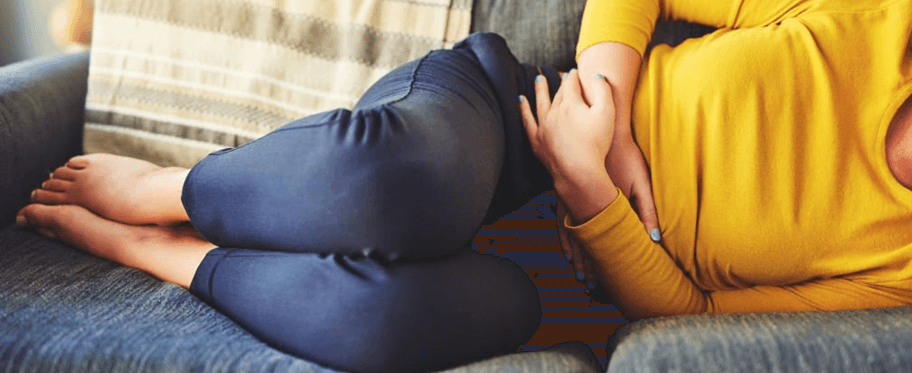
Endometriosis and Infertility
A common condition, endometriosis is a painful condition that can impact your everyday life. When you have endometriosis, tissue similar to the lining of the uterus grows in other places within your abdomen and pelvic area. Endometriosis can cause painful and heavy periods, as well as fertility issues.
What is endometriosis?
Endometriosis is a condition where tissue similar to the lining of your uterus grows on other parts of your body. When this tissue grows in the wrong places, it can cause you to experience uncomfortable symptoms that can impact your daily life. Some people with endometriosis also have issues getting pregnant.
The endometrium is the inner lining of your uterus. This tissue is what you shed during a menstrual period. Think of endometrium as layers of tissue that build up along the inside lining of your uterus. When you have a period, these layers fall away from the walls of your uterus and leave your body. If you get pregnant, the endometrium helps support the early phases of development.
When you have endometriosis, endometrial-like tissue grows on other organs or structures. This tissue can grow within your abdomen, pelvis or even chest. This tissue is hormonally sensitive and can become inflamed during your menstrual cycle. These areas of endometrial-like tissue can cause ovarian cysts, superficial lesions, deeper nodules, adhesions (tissue that connects your organs and binds them together) and scar tissue within your body.
A few places you can develop endometriosis include the:
- Outside and back of your uterus.
- Fallopian tubes.
- Ovaries.
- Vagina.
- Peritoneum (the lining of your abdomen and pelvis).
- Bladder and ureters.
- Intestines.
- Rectum.
- Diaphragm (a muscle near the bottom of your chest that plays an important role in breathing).
How serious is endometriosis?
Endometriosis is a common condition that can interfere with your everyday life. It can cause long-term pain, disruptions to your menstrual cycle and fertility issues. The symptoms of endometriosis are often manageable with treatment.
Who can get endometriosis?
Endometriosis is a condition that most commonly impacts people between the ages of 25 and 40. It can also happen to younger people during their teenage years. Although many people find relief from endometriosis symptoms after menopause, it can still cause discomfort and pain.
What are some of the risk factors for endometriosis?
There are some factors that can place you at a higher risk of developing endometriosis. These factors can include:
- Family history of endometriosis.
- The age you first start having periods. People who begin menstruating before age 11 may be at a higher risk.
- The length of your menstrual cycle (shorter time between periods) and the duration of flow (how many days of bleeding).
- Defects in your uterus or fallopian tubes.
What causes endometriosis?
The cause of endometriosis is unknown. When you have endometriosis, tissue similar to the lining of your uterus grows in the wrong places. When it develops in places like the outside of your uterus, fallopian tubes, ovaries, intestine and within your pelvic cavity, it can cause painful symptoms. This pain is related to increased inflammation and often fibrosis and adhesions.
When endometrial-like tissue grows outside of your uterus, it can cause scar tissue (adhesions). These sections of scar tissue can fuse your organs — creating connections between them that normally wouldn’t be there. This can lead to discomfort and pain.
What are the symptoms of endometriosis?
There are many symptoms connected with endometriosis. The main symptom is pain. This pain can be intense or mild. It can typically be felt in your abdomen, pelvic region and lower back. Although endometriosis is a common condition, not all people will experience symptoms. Sometimes, you can have endometriosis and not know until it’s found during another procedure or investigation of infertility.
People who do experience symptoms of endometriosis may have:
- Very painful menstrual cramps.
- Abdominal pain or back pain during your period or in between periods.
- Pain during sex.
- Heavy bleeding during periods or spotting (light bleeding) between periods.
- Infertility (difficulty becoming pregnant).
- Painful bowel movements.
There’s no connection between the symptoms of endometriosis and the severity of the condition. Some people may have very few patches of endometriosis and still experience severe pain. Other people might have severe endometriosis, but not experience a great deal of pain.
What are your first symptoms of endometriosis?
Many people experience pain during periods from endometriosis. This pain is often felt in your abdomen, lower back and pelvic area. Periods can also be heavier than typical, and there can be spotting (light bleeding) between cycles.
Even though it may be challenging to achieve pregnancy with endometriosis, with help from the fertility experts at Chawla Nursing Home, your chances can be increased. Contact Chawla Nursing Home today to schedule an examination and consultation with one of our fertility experts.
Schedule An Appointment
Get your Appointment Confirm with us Easily

